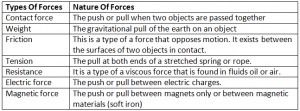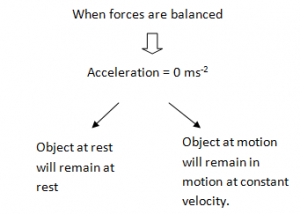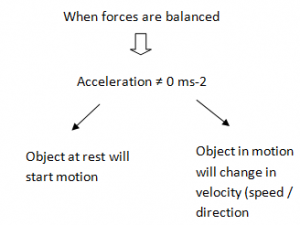Force:
A force is a pull or push that one object exerts on another which produces or tends to produce a motion, stops or tends to stop a motion.
Force = Mass * Acceleration
SI unit: Newton (N)
F =MA
Force Can Cause:
- A Stationary object to start moving.
- A moving object to increase speed.
- A moving object to decrease speed.
- A moving object to change its direction of motion.
- An object to accelerate or decelerate.
Balanced Forces:
Forces acting on an object are balanced if the resultant force is zero.
Unbalanced Forces:
Forces acting on an object are unbalanced if the resultant force is not zero.
Newton’s First Law Of Motion:
Every object will continue its state of rest or uniform motion in a straight line unless a resultant force acts on it to change its state.
Newton’s Second Law Of Motion:
When a resultant force acts on an object of constant mass the object will accelerate and move in the direction of the resultant force. The product of the mass and acceleration of the object is equal to resultant force.
Force = Mass × Acceleration
Newton’s Third Law Of Motion:
For every reaction there is an equal and opposite reaction and these forces act on mutually opposite bodies.
In simpler words: Action and reaction are equal in magnitude but opposite in direction.
Friction:
The force which resists the motion of one surface on another surface is known as friction.
Remember: In order to reduce friction add lubricants like : lubricating oil, graphite or water.




No comments:
Post a Comment